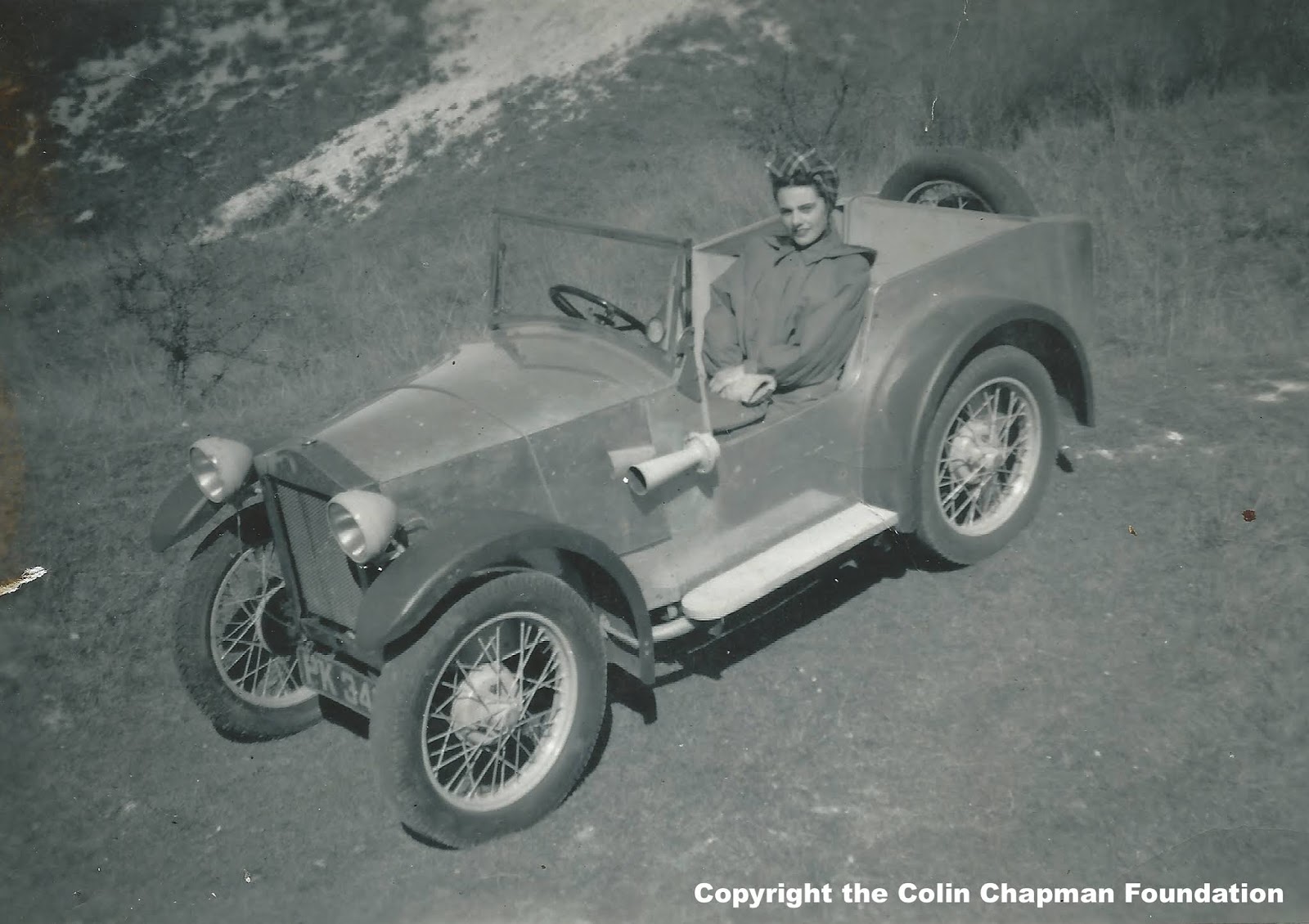 |
| Hazel Chapman in the Lotus Mark I. Copyright the Colin Chapman Foundation |
TGR Staff
Calling on enthusiasts, collectors and car hunters worldwide, Lotus needs your help in tracking down the long-lost Lotus Mark I, the first car built by company founder Colin Chapman. As the British marque continues its 70th celebrations, it wants fans from around the world to pick up the trail of the most elusive Lotus ever – the competition car that the young engineer hand-built in a small London garage owned by his then girlfriend’s parents. Overcoming the standard car’s limitation Chapman applied innovative approaches to improve its performance in challenging trials competitions.
Despite its existence being well documented, the current whereabouts of the Mark I remain a mystery. Built by Chapman, with the help of friends and his girlfriend (who later became his wife), Hazel, he entered a number of events in 1948 with immediate success. However, Colin was constantly innovating, and was soon hard at work on the Mark II. The first car was sold in November 1950 but, from there, the car’s trail goes cold. Despite much research over the years, its whereabouts have never been established.
Joining Lotus in the hunt for the origin of its species is the son of the company’s founder, and director of Classic Team Lotus, Clive Chapman. “The Mark I is the holy grail of Lotus’ history,” explains Clive. “It’s the first time that my father was able to put his theories for improved performance into practice when designing and building a car. To locate this landmark Lotus, as we celebrate the 70th anniversary, would be a monumental achievement. We want fans to take this opportunity to look in every garage, shed, barn and lock up they’re allowed to. It’s even possible that the Mark I was shipped from the UK, and we’d love to know if it survives in another country.”
 |
| Colin Chapman competing in the Lotus Mark I. Copyright the Colin Chapman Foundation |
The birth of the Lotus legend:
In 1948 Colin Chapman built his first competition car, following his own theories for improved performance. Chapman’s way of thinking and his principles remain as relevant today as they were 70 years ago and his ethos still allows the company to optimize mass and aerodynamics in order to maximize performance and handling.
Covering everything from suspension configuration and layout, making sure that ground clearance was not compromised, improvements included reinforcing the chassis, cladding the body in lightweight bespoke panels and ensuring that components frequently damaged in competition could be quickly reattached. Applying theories learned from this formal training as an engineer, Colin was already developing the principles that would go on to define Lotus cars of the future. One notable decision was to extend the rear of the car, and include two spare wheels. This allowed for the better allocation of ballast, distributing weight within the car to maximize traction for each event.
In a lock-up borrowed from Hazel’s parents, Colin re-imagined and re-engineered the Austin Seven to create the first Lotus. Built by hand, and with Hazel (his then-girlfriend) helping where needed, he completed the car in the spring of 1948 and immediately entered it in competitive trials. With Hazel in the passenger seat and Colin behind the wheel, they picked up two class awards in the car’s first events.
Originally finished in bare, unpolished alloy, the car was then painted white before repainted in red. A restless engineer, Chapman was soon working on the next car, the Mark II, designed using the lessons learned from his first and the experience gain through the competitions he’d entered. As a result, an advert placed in Motor Sport magazine, describing an Austin Seven Special four-seater sports-cum-trials car saw the Mark I sold in November 1950. Chapman received £135 for the car, but the only thing now known about the new owner was that they were based in the north of England.
Over the years many enthusiasts have looked for the car, but to no avail. Lotus has previously called on experts to help locate the lost vehicle but, as the company gears up for the highpoint of its anniversary celebrations at the end of September, it’s hoped that a renewed search, on a global scale, will help track down the landmark car.




















